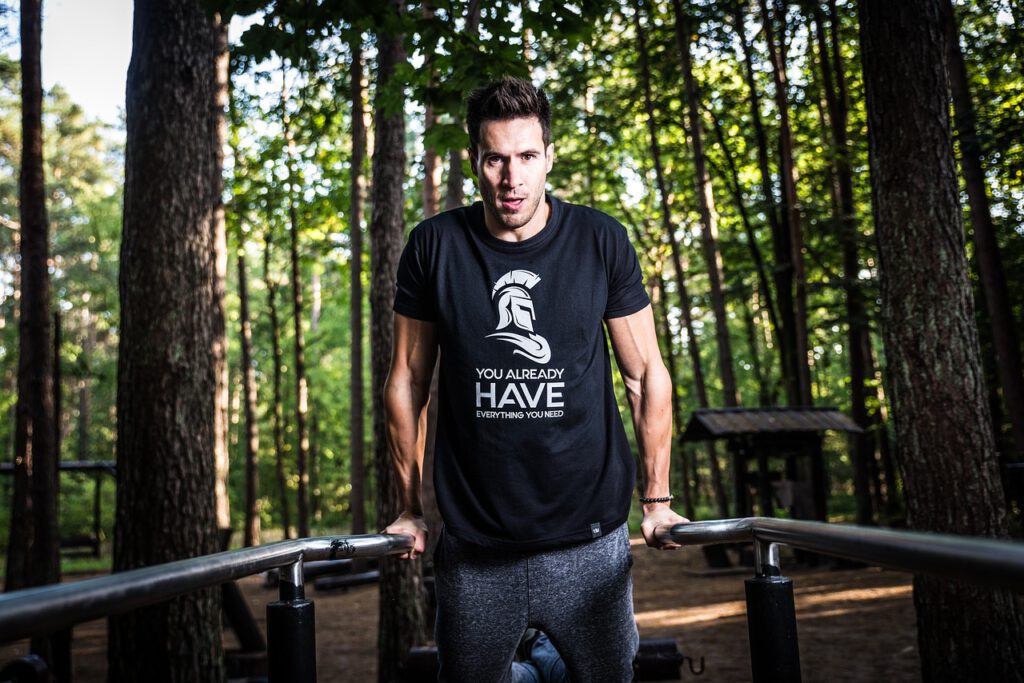
Weight loss gynecomastia is a condition that affects many people struggling to lose weight. It’s often thought of as a symptom of an unhealthy lifestyle, but is this really the case? In reality, there are lots of factors that can cause gynecomastia in men who are trying to get fit. From hormonal imbalances to underlying medical conditions, understanding why it occurs and how it can be treated is essential for anyone looking to lose weight safely and effectively.
In this article, we’ll explore the truth behind weight loss gynecomastia. We’ll discuss what it is, what causes it, and how to manage it while still meeting your fitness goals. We’ll also examine some common misconceptions about the condition so that you can make informed decisions when deciding how best to take care of yourself and your body.
By the end of this article, you should have a better understanding of why weight loss gynecomastia occurs and how best to deal with it if you experience any symptoms.
So let’s dive into the world of weight loss gynecomastia — understanding its causes and treatment options to help you stay healthy on your journey towards achieving your fitness goals!
1. What Is Gynecomastia?
An ounce of prevention is worth a pound of cure; and when it comes to gynecomastia, understanding what it is can help us prevent or address weight loss-related issues. Gynecomastia is a medical condition that causes the enlargement of male breast tissue due to an imbalance of hormones. It occurs in infants, adolescents, and adult males.
The physical signs of gynecomastia vary greatly, from mild puffiness around the nipples to more prominent breasts similar in size to those on females. In some cases, the breasts may become tender or painful. The underlying causes can range from genetics and aging to medications and health conditions.
In terms of weight loss, gynecomastia can be an obstacle if left untreated as it can cause excess body fat storage in the chest area. To understand this phenomenon better and identify possible solutions, let’s take a look at the common causes of gynecomastia.
2. Causes Of Gynecomastia
Gynecomastia is an enlargement of the male breast tissue caused by an imbalance between testosterone and estrogen. In this article, we’ll be exploring the various causes of gynecomastia.
There are many possible causes, including:
- Hormonal imbalances due to age, medications or medical conditions
- Excessive consumption of marijuana or alcohol
- Long-term use of drugs such as steroids or testosterone replacement therapy
- Obesity or sudden weight loss
In some cases, the exact cause may be unknown. However, it is important to note that gynecomastia can often be linked to one or more of the factors mentioned above. Therefore, if you have experienced any of these issues recently and have developed enlarged male breasts as a result, it’s important to consult with a doctor for further evaluation and treatment options.
Since lifestyle changes such as diet and exercise can improve hormonal balance and reduce other risk factors associated with gynecomastia, it’s important to take steps towards living a healthier lifestyle in order to reduce the chances of developing gynecomastia in the future. With that said, let’s move on to discussing symptoms of gynecomastia.
3. Symptoms Of Gynecomastia
Gynecomastia is a condition that affects men, and is characterized by the enlargement of male breast tissue. While this condition may not always be noticeable, there are some signs and symptoms that indicate it may be present. Understanding these potential indicators can help prompt a conversation with a doctor about treatment options.
The most common symptom of gynecomastia is swelling in the chest area. This usually occurs on both sides of the chest, but can sometimes be unilateral. A feeling of tenderness or sensitivity around the nipples can also accompany this swelling. In some cases, men may also notice an increase in fat deposits around the chest area.
In more severe cases, gynecomastia can cause skin to stretch over the enlarged breast tissue, resulting in an uneven appearance. Men may also experience pain or discomfort in their chest area due to the swelling associated with gynecomastia.
These are all potential signs and symptoms of gynecomastia – understanding them can help you determine if further consultation with your doctor is needed to discuss treatment options. As we move forward into discussing how gynecomastia is diagnosed, it’s important to keep these indicators in mind as they could play an important role in the diagnostic process.
4. Diagnosing Gynecomastia
It is widely accepted that if a man has both enlarged breast tissue and tenderness in the area, then he likely has gynecomastia. However, this is not always true and there are other ways to diagnose this condition. So, what can be done to accurately diagnose gynecomastia?
One of the first steps to diagnosing gynecomastia is for a doctor to take a medical history and perform a physical exam. During the physical exam, they will check for any underlying causes of enlarged breast tissue such as certain medications or an imbalance in hormones. If no underlying causes are found, then further testing may be required.
The next step in diagnosing gynecomastia is imaging tests such as an ultrasound or mammogram. These tests can help determine if there is an increase in breast tissue due to hormone imbalances or if it’s simply fatty tissue caused by weight gain. In some cases, biopsies may also be necessary to accurately diagnose the condition.
After diagnosis comes treatment; understanding how best to treat gynecomastia depends on its cause and severity. As such, accurate diagnosis is key in helping men with weight loss-related gynecomastia get back on track with their health goals.
5. Treatments For Gynecomastia
Incredibly, many people who experience gynecomastia don’t even realize that there are treatments available to them. It’s a surprise to them when they learn that help is out there. Thankfully, if you have been diagnosed with gynecomastia, there are a variety of treatment options that can help reduce the appearance of enlarged male breasts.
The most common treatment for gynecomastia is surgery. This option involves removing excess fat and glandular tissue from the breast area. Surgery can be costly and may require a few days for recovery, but it has proven to be highly effective in treating gynecomastia.
Other treatments such as hormone therapy and liposuction can also be used to reduce the size of the breasts. Hormone therapy works by decreasing the amount of testosterone in the body while increasing estrogen levels, resulting in less overall breast tissue. Liposuction is an alternative surgical procedure that removes fat deposits from the chest area without actually reducing any glandular tissue. Both of these treatments have shown promising results in treating gynecomastia but may not be suitable for everyone depending on their individual situation.
No matter what your situation though, it’s important to talk to your doctor about your options so that you can make an informed decision about which course of treatment is best for you. With the right approach and care, you can get back to feeling confident about your body again – no matter what shape or size it may be!
6. Weight Loss For Gynecomastia
As it turns out, weight loss is not just about losing a few pounds. For many men, it can be the key to helping reduce the appearance of gynecomastia. According to one study, a group of obese men lost an average of 33 pounds over 12 weeks and experienced a significant reduction in their chest size. This data point highlights how important weight loss can be in minimizing the effects of gynecomastia.
So what’s the best way to go about reducing your body fat? It starts with making changes to your diet. Eating healthy by consuming lean proteins, fruits and vegetables, whole grains, and healthy fats should be part of your daily routine. Additionally, avoiding processed foods and sugary drinks is essential for any successful weight loss journey.
However, diet alone won’t cut it when it comes to reducing your body fat. To achieve lasting results you’ll need to incorporate some form of physical activity into your lifestyle as well. Aerobic exercises such as running or cycling are great options for burning calories and losing weight from all over your body – including the chest area. On top of that, adding strength training into the mix will help build muscle mass which will help with overall weight loss as well as create more definition throughout the entire body.
Making healthy lifestyle changes can seem daunting at first but is ultimately beneficial when it comes to reducing gynecomastia through weight loss. While taking small steps towards achieving this goal is important, having a support system in place can make a world of difference in holding yourself accountable and reaching success faster than expected.
7. Exercises For Gynecomastia
The road to recovery from gynecomastia can be a long, winding journey – but exercise is a crucial part of the process. A combination of targeted resistance and aerobic exercises can help to reduce the fat and tissue that causes the appearance of man boobs.
When it comes to choosing effective exercises for gynecomastia, it’s important to focus on building strength in your chest and back muscles, as well as burning fat with cardio-based activities. Some common exercises that are recommended for those looking to reduce their gynecomastia include push-ups, chest presses, pull-ups, burpees and planks.
These exercises should be done at least three days a week for maximum results, starting with low intensity workouts and gradually increasing difficulty over time. Make sure to rest between sessions and drink plenty of water during your workouts; these simple steps can make all the difference in achieving your goals!
8. Medications For Gynecomastia
Medications for gynecomastia can be used to reduce existing fat tissue and prevent further growth of breast tissue. The most common medications used are anti-estrogens, diuretics, and testosterone supplements. Anti-estrogens work by blocking the effects of estrogen, while diuretics help to reduce water retention in the body. Testosterone supplements can help to increase testosterone production in men.
Before taking any medication for gynecomastia, it is important to talk to a doctor or healthcare professional about the risks and benefits associated with each type of medication. In some cases, medications may not be suitable depending on a person’s individual circumstances. Additionally, there are potential side effects associated with some medications, so it is important to understand these before beginning treatment.
It’s also important to note that medications alone may not be enough to achieve desired results in terms of weight loss or reduction of gynecomastia symptoms. A combination of lifestyle changes such as diet and exercise may be necessary alongside any medication regime for best results. With these considerations in mind, exploring surgical options for gynecomastia can be a beneficial next step in treating the condition.
9. Surgery For Gynecomastia
Surgery for gynecomastia may sound like a dream come true for those struggling with male breast enlargement, but it’s important to remember that there are still risks and complications. Oddly enough, many men opt for surgery to reduce their breasts, yet sadly end up with more problems than when they started. Before undergoing any type of procedure, it’s essential to consider the risks and benefits associated with the surgery.
Here are three risks that you should think about before going under the knife:
1) The potential for infection;
2) Scarring and/or disfigurement;
3) The possibility of an unsatisfactory outcome.
So while it’s understandable why so many want to take advantage of what surgery has to offer in terms of eliminating or reducing the size of their gynecomastia, it’s also important to be aware of the potential consequences. Yes, surgery can make a major difference – or none at all – but either way, a person should be prepared for whatever outcome may arise. With this in mind, transitioning into discussing the complications related to gynecomastia is necessary.
10. Complications Of Gynecomastia
Surgery for gynecomastia is becoming increasingly popular, with a reported 30% increase in the last 5 years. Despite this rise in popularity, it’s important to understand the possible complications that can arise from undergoing surgery.
Complications of gynecomastia may include: – Infection or abscess – Excessive bleeding or fluid accumulation – Numbness or changes in sensation – Scarring – Unsatisfactory aesthetic results.
In some cases, these issues can be addressed through additional surgery or medical intervention. However, depending on the severity of the complication, some men may not be able to achieve their desired outcome. Additionally, there is an increased risk of scarring and nerve damage if corrective surgery is required. For these reasons, it’s important to consult with a qualified doctor prior to making any decisions about undergoing a gynecomastia procedure.
Frequently Asked Questions
What Lifestyle Changes Should I Make To Lose Weight And Reduce Gynecomastia?
Making changes to your lifestyle is key when it comes to losing weight and reducing gynecomastia. The best way to go about this is by creating a plan that works for you, taking into account your own preferences, health conditions, and goals.
When it comes to diet, there are plenty of options to choose from. Eating whole foods in moderation, avoiding processed foods and sugary drinks, and increasing the amount of water you drink can be beneficial for weight loss. Additionally, if you’re looking for an additional boost in weight loss, consider limiting calorie intake or following an intermittent fasting diet.
Exercise is also important for healthy weight loss. Aim for at least 30 minutes of activity most days of the week—it can be anything from walking or running to yoga or strength training. Combining aerobic exercise with strength training will help you build muscle while burning fat, which can further reduce gynecomastia symptoms.
It’s important to remember that lifestyle changes take time and dedication; but with the right tools and support system in place, you can make progress towards achieving your goals.
How Long Does It Take To See Results From Weight Loss And Gynecomastia Treatment?
Weight loss and gynecomastia treatment can be a long road, like a marathon of determination and patience. But when it comes to seeing results, how long does one have to wait? It’s the age-old question that plagues many. The answer is not straightforward because everyone responds differently to different treatments, but there are some general guidelines.
The most important thing to remember is that results don’t happen overnight; they take time and dedication. Depending on the severity of your condition and the kind of treatment you’re doing, you may begin to see small changes within a few weeks or months. For example, if you’re making lifestyle changes such as eating right and exercising regularly, you may notice that your body fat percentage starts to decrease in this timeframe. However, if you’re taking medication or undergoing surgery for gynecomastia, it can take up to six months for any noticeable physical changes in your chest area.
It’s also important to note that weight loss won’t necessarily translate into reduced gynecomastia immediately; sometimes it takes months or even years before the effects become visible. That being said, sticking with your plan is key to achieving long-term success – so don’t give up! With consistent effort and progress monitoring, you’ll eventually get there – no matter how long it takes.
Are There Any Dietary Supplements That Can Help With Weight Loss And Gynecomastia?
When it comes to achieving weight loss and treating gynecomastia, there are many options available. But are there any dietary supplements that can help with these goals? The answer is yes. Dietary supplements may be able to support your weight loss and gynecomastia management plan in a few different ways.
First of all, some dietary supplements contain ingredients like caffeine and green tea extract that can boost your metabolism, helping you burn more calories throughout the day. Additionally, certain supplements can help reduce water retention and bloating, which can make you feel lighter and slimmer while also reducing the appearance of enlarged male breasts. Finally, some supplements may also be able to suppress your appetite or reduce cravings for unhealthy foods.
Overall, dietary supplements can be beneficial additions to weight loss and gynecomastia treatment plans if used properly. However, it’s important to speak with your doctor before taking any supplement as they may interact with medications you’re currently taking or have other side effects. With that in mind, dietary supplements may just be the extra push you need to reach your health goals!
What Are The Best Exercises For Reducing Gynecomastia?
Exercising to reduce gynecomastia is a great way to achieve the body you desire. However, it’s important to understand the best exercises for this goal. So what are they?
Strength training exercises are the most effective when it comes to reducing gynecomastia. Push-ups and bench presses target the chest muscles, helping them become more toned and firm. In addition, exercises such as pull-ups, dips and cable crossovers can also be helpful in reducing the appearance of gynecomastia.
On top of strength training, aerobic exercises can be beneficial too. Popular aerobics such as running, swimming or cycling can help burn fat and tone up your chest area. Moreover, interval training such as HIIT is also useful for targeting your chest muscles in short bursts of intensive exercise.
In summary, strength training exercises that target your chest muscles are your best bet for reducing gynecomastia. This should be combined with aerobic exercise like running or cycling which helps burn fat and tone up your chest area. Lastly, interval training like HIIT can also be beneficial in targeting your chest muscles in short bursts of intensive exercise.
Are There Any Natural Remedies Or Home Treatments For Gynecomastia?
Gynecomastia can be like a stubborn weed, sprouting up from one’s chest and taking over. That’s why it’s important for those struggling with the condition to know there are natural remedies and home treatments available to them.
The first step is to look at diet and nutrition. Eating foods rich in vitamins, minerals and nutrients can help balance hormones that contribute to gynecomastia. It can also help reduce overall body fat, which can make the condition less noticeable. Additionally, avoiding processed foods, sugar and excess carbohydrates can be beneficial as well.
Another useful approach is exercise. Strength training can help build muscle in the chest area while burning fat and improving posture—all of which may help diminish the appearance of gynecomastia. Cardio exercises such as running or biking are also effective for weight loss in general, helping to reduce overall body fat and make the condition less visible.
Finding a home remedy or treatment for gynecomastia doesn’t have to be difficult or time-consuming—and it doesn’t always require medical intervention either. With some simple diet adjustments, lifestyle changes and regular exercise, many people have found success managing their gynecomastia naturally.
Conclusion
The road to weight loss and gynecomastia treatment can be a difficult one, but with the right lifestyle changes, dietary supplements, and exercises, you can make significant improvements. It is important to remember that results may take time and depending on the severity of your condition, it may take up to several months before you start to see any noticeable improvement. Making small changes each day will help you stay focused and motivated on achieving your goals.
To illustrate this point, consider the story of Bob who wanted to get rid of his excess chest fat. He was initially overwhelmed by the task ahead of him, but he made a commitment to himself to make small changes every day. After many months of dedication and hard work, Bob was finally able to see progress in his chest area and noticed a significant reduction in gynecomastia symptoms.
Overall, weight loss and gynecomastia treatment can be daunting but with patience and perseverance, you can reach your goal. While it may take some time for results to become visible, making small daily changes towards improved health will help keep you motivated along the way. With the right attitude and commitment, anyone can achieve their desired results with weight loss and gynecomastia treatment.



